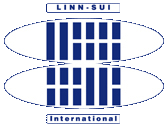|

Futons are made from layers of carded cotton, the same size as
the mattress, that are put into the futon in sheets (between
5 to 7 layers plus additional coconut or latice depending
on the kind of futon) until the desired thickness is obtained.
Layers of coconut or latice fibre (or both) can be inserted
into the futon, lending the mattress elasticity and non
deformability.
If these materials are added to the sides of the mattress
the cotton still maintains body contact (preventing the
formation of mites and acting as a thermoregulator).
Futons give rigid support but adapt themselves well to body
shape; they become rigid and compact in the highest pressure
points (like the pelvis) while remaining thicker and softer
in the lowest pressure points (like the arch of the spine
- the lumbar region) anatomically supporting the whole of
the body surface, allowing for the uniform release of muscular
and neuralgic tension without accumulating it in particular
parts of the body.
 Futons suffer from excessive humidity, limiting their capacity
to breathe. Futons suffer from excessive humidity, limiting their capacity
to breathe.
The material inside the futon doesn't move around because
the layers of cotton are the same size as the mattress.
For this reason only a few studs are necessary to keep it
still.
Having layers the size of the mattress futons can't be remade
or recarded, unlike wool (in woolen mattresses) which moves
around in the form of flakes and traps dust as a result
of its electrostatic properties.
The light coloured, natural material of the mattress must
be well protected.
The outer material of the futon is off white, unbleached
drill cotton.
The traditional
futon is made entirely from cotton, it is advisable
to lay it on a flat surface such as a tatami mat. Being particularly adaptable to its underlying surface
it should not be put on slatted bed bases with slats that
are more than 7/8cms apart.
This kind of futon adapts itself most to body shape; once
the material is compacted by body pressure however, it takes
on a certain rigidity and therefore needs to be well looked
after as by folding and turning it the cotton inside regains
air and thickness.
The cotton
and latice futon envelops the body less but also conserves
some elasticity under body pressure; the latice inside alleviates
the effect of the uneven base (wooden slats), it is naturally
suited to a tatami mat base.
Having less cotton and containing latice it has less need
to be aired, using the material's elasticity and undeformability
to regain thickness.
The cotton
and coconut futon is the hardest.
The coconut that is inserted into the middle of the futon
makes it more rigid and better able to breathe, its rigidity
alleviates the effects of the underlying base; its upkeep
is similar to that of the latice based futon above with
the added breathing capacity of the coconut.
The cotton,
coconut and latice futon: padded with layers of cotton
interlayered with sheets of latice and coconut make the
mattress firmer.
The latice and the coconut allow for both outer elasticity
and inner rigidity, making the centre of the futon undeformable.
This futon is the most suited to uneven bases.
This model has less need for upkeep because the coconut
and latice inside easily regain their thickness and the
outside cotton is easily aired.
|







 Futons suffer from excessive humidity, limiting their capacity
to breathe.
Futons suffer from excessive humidity, limiting their capacity
to breathe.